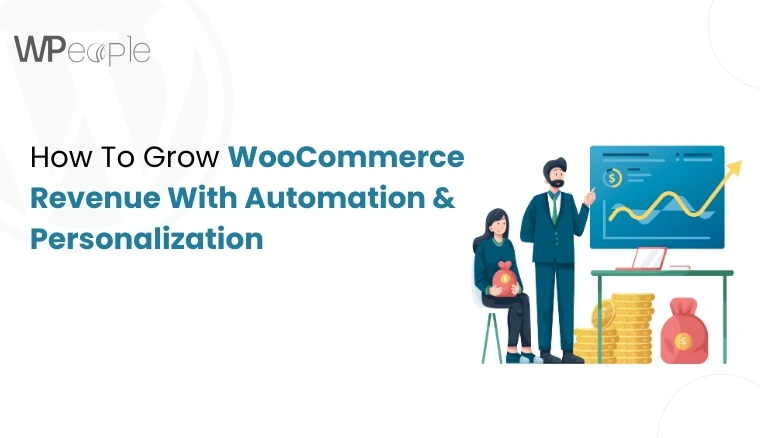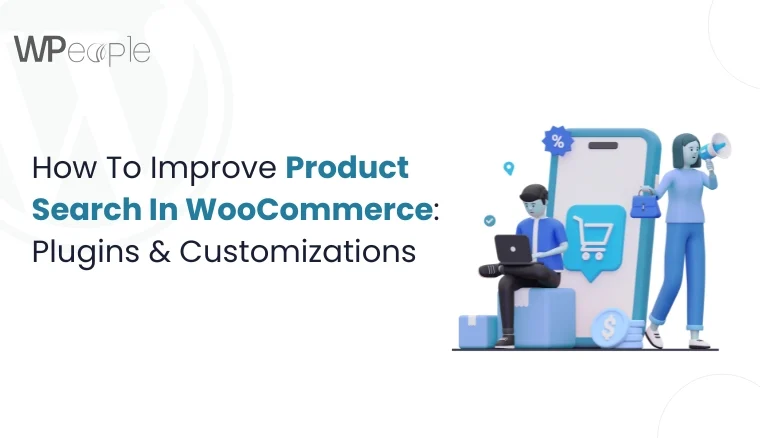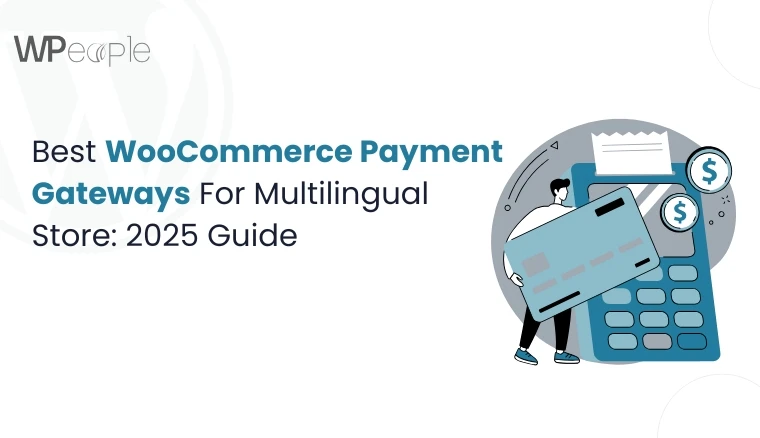
WordPress, the most used CMS, has an effective user management system in-built in the core. This system is extended by WooCommerce – an excellent plugin for WordPress that adds more roles appropriate for online stores. Managing users in WordPress and WooCommerce need to know how these roles interrelate and the privileges pertaining to each of them.
WordPress and WooCommerce user roles are sets of permissions that define the capabilities of users on your website. They are essential for protection and optimization of the processes, which means that the users should have access only to the required features. Effective management of these roles assists in WooCommerce security and SEO store performance.
Understanding Default User Roles
WordPress Default Roles
WordPress comes with six default user roles, each with its own set of capabilities:
Super Admin: Has access to the entire network administration features and all other features. This role is available only in multisite installations.
Administrator: Has access to all the administration features within a single site.
Editor: Can publish and manage posts, including those of other users.
Author: Can publish and manage their own posts.
Contributor: Can write and manage their own posts but cannot publish them.
Subscriber: Can only manage their profile.
WooCommerce-Specific Roles
In addition to the default WordPress roles, WooCommerce introduces two specific roles to manage store operations:
Customer: Assigned to users who register via the checkout or sign-up process. They have read access, can edit their own account information, and view their order history.
Shop Manager: Can manage all settings within WooCommerce, including products and orders, without needing full administrative access.
In-Depth Look at Key WooCommerce Roles
Administrator Role: Capabilities and Responsibilities
The Administrator role in WooCommerce has extensive site management functions. All the settings can be managed by the administrators within WordPress and WooCommerce and they can also install plugins, change the Woocommerce theme integration, manage the users and so on. Because administrators have almost unrestricted capabilities, it is recommended to use them sparingly for improving WooCommerce security.
Shop Manager Role: When and How to Use It
The Shop Manager role is for users who need to manage WooCommerce stores only but do not need to control all aspects of the website. They can add, update, delete products, process orders, handle refunds and check the reports. This role suits store managers or anyone who is directly involved in the running of the store. Applying the Shop Manager role correctly aids in ensuring that the users’ access is secure and efficient user management in WordPress.
Customer Role: Understanding Customer Permissions
The customers in WooCommerce can create an account and manage their profile details and their orders. They cannot have any backend access, it only means they can only access certain data necessary for the application. It is crucial to understand customer permissions to ensure that the businesses are secure for customers while still being user-friendly.
Comparing WordPress and WooCommerce User Roles
Key Differences and Overlaps
WordPress and WooCommerce user roles are somewhat similar, however, WooCommerce enhances the WordPress capabilities by including roles that relate to e-business processes. For example, the Shop Manager role contains capabilities associated with the products and orders which are not relevant to basic WordPress roles.
How WooCommerce Extends WordPress Functionality
With WooCommerce, the WordPress user management becomes more sophisticated and involves extra levels of access more suitable for online shops. This extension enables a fine-tuning of the users’ capabilities so that every role will be able to access only the relevant functionalities, which in turn enhances the website security standards.
Best Practices for Assigning User Roles
When to Use Each Role
The user role is assigned according to the requirements. Very few users have full control of the website, such as administrators and owners. For example, a manager may have full access to the backend but customers only have limited access to the frontend.
Limiting Administrator Access
To improve WooCommerce security, if there are multiple administrators in the system, it is mandatory to limit access appropriately and define the administrative role for each admin. One recommendation for the system is to periodically check user roles to enhance security.
Proper Use of the Shop Manager Role
The Shop Manager position should be given to those who are directly in charge of the store’s affairs on a daily basis. This role offers just enough privileges to handle products, orders, and customers, but it does not allow for the full administrative rights. Thus, the correct usage of the Shop Manager role contributes to the protection of user access and optimal store functioning.
Customizing User Roles and Permissions
changing the user role enables one to assign the right permissions to the specific needs of the website. This may help in increasing security, making work processes more efficient, and guaranteeing that users have access only to the required functionalities and information.
Tools and Plugins for Role Editing
Some of the WordPress and WooCommerce tools and plugins for customizing User Roles include the following. A widely used plugin is User Role Editor, which enables the user to easily edit capabilities and create new roles.
Step-by-Step Guide to Creating Custom Roles
Install and Activate the User Role Editor Plugin: Go to the Plugins menu, search for “User Role Editor,” install, and activate it.
Navigate to User Role Editor: Access it from the Users menu.
Create a New Role: Click on “Add Role,” give it a name, and clone capabilities from an existing role if desired.
Customize Capabilities: Select the capabilities you want to assign to this role.
Save Changes: Save your new role and assign it to the appropriate users.
Advanced User Management Techniques
Fine-Tuning Permissions for Enhanced Security
Permission tuning is about choosing which functionalities should be available for the users belonging to each role. This can help in minimizing unauthorized access to the website and at the same time increase the WooCommerce User role security. Periodically check and modify permissions in accordance with the new requirements and best practices.
Creating Role-Specific Capabilities
Developing role-specific capabilities require the management to come up with special privileges for specific roles. This can be done by using plugins such as the User Role Editor which enables one to assign, alter and even delete a capability of a given role.
Managing User Access to Sensitive Data
The control of user access to resources with high levels of security is important for the adherence to best practices in the creation of websites. Make sure that only the people who require the permission to access the specific information are the ones who are granted the permission. It is suggested that the systems should be audited and reviewed from time to time to ensure that there are no security risks.
Security for Best practices of User Management
The first and foremost thing that should be followed for WooCommerce user role security is the username and password policy. Users should be advised to use good passwords that are difficult to guide and should also be changed often. Perhaps, the passwords should also be stored in the password manager to ensure that they are safe.
Implementing Two-Factor Authentication
Two Factor Authentication 2FA is a system where a user is required to enter two forms of identification to verify him/her before he/she is allowed to log in. This can go a long way in minimizing the risk of intrusion as it is a common way that hackers use to gain access to an organization’s systems. There are many plugins that can be used to enable the 2FA in WordPress and WooCommerce.
Regular Review and Audit of User Roles
Periodic review and audit of the user roles assist in checklist the rights assigned to the various users and to eliminate any excessive access. This practice provides security and assists in the management of the user population.
Enhancing Store Performance through User Roles
Optimizing Workflow with Proper Role Assignment
User roles should be distributed correctly in order to achieve the most efficient work since users need to have access only to the tools and data they require. This saves time and brings order in the store, which in return leads to the general improvement of store performance.
Improving Team Efficiency and Collaboration
Proper role and responsibilities bring out the best from people and help in better teamwork and productivity. They state that defining roles well assists the workers in comprehending their tasks and eliminates confusion, which is beneficial for the smooth working of a team and its high productivity.
Data Management and User Roles
Unlocking the Potential of Customer Data
If customer data is managed correctly, it will be beneficial in understanding the shopping patterns and trends. The application of WooCommerce user roles in this data enables one to adjust marketing approaches, enhance customer satisfaction, and boost sales. Our WooCommerce development with page builders enhances the power and flexibility of your online store.
Searching and Filtering Customers by User Role
The WooCommerce extention enables the admin to search and filter customers by their roles in order to manage and analyze the customers’ data. With the help of this functionality, you can classify customers and promote relevant products to them.
Backup and Recovery Strategies
Importance of Regular Backups
Backup is an important process that needs to be performed to prevent loss of data in your website. They help you to be able to easily restore your site in the event of a hacking attempt, server crash, or in case you deleted your data by mistake.
Tools and Methods for Website Backup
Some many tools and techniques can be used to create backups of your website such as plugin UpdraftPlus and BackupBuddy. These tools enable you to set up automatic backups and store them in a secure place so that you can restore your site in the event of an occurrence of an event.
Advanced Topics in WooCommerce User Management
Managing Roles in Multisite Environments
The management of user roles in multisite environments is a bit difficult because of the presence of extra layers of access. Super Admins can manage the whole network and Site Admins can manage their own site. It is important to assign the right roles when working with multiple sites as this will create better woocommerce security.
Integrating with Third-Party Plugins and Services
WooCommerce can be extended using third-party plugins and services integrating. For instance, integration with CRM systems or with marketing automation tools will improve user management and data analysis function. Make sure that these integrations are secure and relate the role of the users you foresee with the software.
Troubleshooting Common User Role Issues
Resolving Permission Conflicts
Permission conflicts can arise when users have overlapping roles or when custom development roles are not correctly configured. To resolve these conflicts, review and adjust the capabilities assigned to each role, ensuring that there are no unintended overlaps.
Dealing with Lost Admin Access
Losing admin access can be a significant issue. To regain access, you can use methods such as updating the user role in the database via phpMyAdmin or using the Emergency Password Reset Script. Regular backups and proper documentation of user roles can help prevent such issues.
Future Trends in E-commerce User Management
Emerging Technologies and Their Impact on User Roles
Emerging technologies like AI and machine learning are set to revolutionize e-commerce user management. These technologies can automate role assignment, enhance security through behavior analysis, and provide deeper insights into user activity. Website’s security can be significantly boosted by incorporating WordPress plugins.
Preparing for Future Security Challenges
As cyber threats evolve, so must your security measures. Stay updated with the latest WooCommerce user role security practices, including implementing advanced authentication methods, regular security audits, and staying informed about emerging security trends.
Conclusion
Effective user management is crucial for the security and performance of your WooCommerce store. Understanding and properly assigning user roles, customizing permissions, and woocommerce support implementing security best practices can significantly enhance your store’s efficiency and security. Regular reviews and updates ensure that your user management system remains robust and aligned with your business needs. By staying informed about emerging trends and technologies, you can prepare your store for future challenges and opportunities in e-commerce user access control.
Consult with Our WordPress Experts On:
- WooCommerce Store
- Plugin Development
- Support & maintenance




